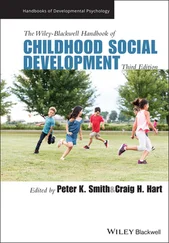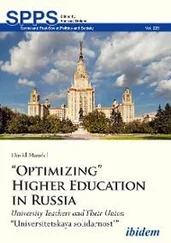With its emphasis on bringing about the kinds of social changes needed to create a more sustainable society, the aspirations of ESD seem to encourage an activist learning approach. Students pursuing activism projects in their communities have powerful potential to generate the transformative education of true ESD. Many students already recognize the need for change on campuses (Barlett and Chase 2004; Drayson et al. 2014) and beyond to enable a more sustainable society, and are motivated to adapt their own behavior (Dagiliūtė et al. 2018; Rodríguez‐Barreiro et al. 2013) and influence others (Cotton et al. 2016). Encouraging and supporting students to channel their energies and values – in a way that is determined and driven by them – seems a vital way to generate truly transformative learning, while for students who lack a sense of responsibility for the sustainability of their surroundings, activist learning can also potentially generate a greater sense of agency and empowerment. Wherever a student's starting point as a sustainability activist is, opportunities to engage in activist learning have the potential to empower students to build sustainability competencies through systems thinking, problem‐solving and enacting social change, in contrast to more passive learning activities.
While it is generally accepted that university students should be encouraged to take part in volunteering and work experience for the development of employability skills, the idea that they might be encouraged to engage in social or political activism as part of their studies is seldom discussed and undoubtedly controversial. Intentionally encouraging activism may seem an unneeded distraction from the core curriculum, or may even be seen to threaten academic objectivity and liberty. Even where such high‐level objectives as tackling social justice exist at a university or program level, few courses teach strategies for engaging in social change (Brinkman and Hirsch 2019), highlighting the potential, and we would argue, need, for more development of activist learning opportunities across the formal, non‐formal/informal, and hidden curriculum domains.
This chapter explores the concept of “activist learning for sustainability,” drawing on staff reflections and student interviews of a student‐led project to explore and promote “sustainable student living.” Reflecting on the experiences of this project and related literature, the chapter considers the students' motivations and experiences of the project, the students' learning and development, the role of the formal, informal, and hidden curricula in creating campus‐based activist learning opportunities for students, and considerations of staff and student interactions across the public and private spheres of student life and campus‐based activism. The chapter concludes with recommendations for ESD practitioners engaging with the development of activist learning opportunities.
2.2 Methodology and Case Description
2.2.1 Case Description: The Sustainable Student House
The Sustainable Student House (SSH) project was conceived by four first‐year students of a sustainability‐focused undergraduate degree at Keele University, UK in 2010. These students expressed that they wanted the opportunity to live on the university campus in a more sustainable way than they felt was possible in traditional student halls, and they particularly wanted a space to grow food. With encouragement and coaching from their course directors, the students wrote a proposal detailing their vision and presented it to university management. After several months of lobbying and negotiation, they were permitted to rent a 1960s bungalow on the campus for the following academic year.
The designated bungalow had four bedrooms, a living room, a small kitchen, and a large garden. It had no specific eco‐efficient features or credentials prior to the project. Transforming it into a genuinely more SSH involved a significant amount of work indoors and out. This included establishing a vegetable garden with raised beds, a polytunnel, and a compost heap, supported by alumni funding and labor from student volunteers organized by the students themselves.
To make changes to the interior of the house, the students gained sponsorship from an energy company who donated energy‐saving appliances, and then installed other small energy‐saving measures, such as reflective radiator backing. The university also installed new double‐glazed windows and a new, more efficient boiler. With a view to making the bungalow a learning space for visitors, the students posted signs and labels around the house explaining different aspects of sustainable living and the environmental (and financial) savings that could be made from different measures.
Beyond making their living space as sustainable as possible, a key objective of the students was to make an impact on the wider student community. They communicated the project via a website, a blog, articles in the student magazine, and social media. Over recent years, housemates have utilized Facebook to reach the student population and created an Instagram account, regularly producing video content and collaborating with university social media teams to do “takeovers” of the main university Instagram account. The house itself has become an important hub and meeting space for student activities, bringing students together to organize new sustainability‐related projects. The project has attracted media attention (e.g. Zoo and Steed 2019), and the university uses the project to promote the university's sustainability activities. The project is still active at the time of writing.
In the first few years of the project, only students from the undergraduate sustainability or environmental science program were invited to apply to live in the SSH. However, in later years, to make the opportunity available for a wider range of students, students from other disciplines were invited to apply, although in order to maintain connection with the curriculum, a minimum of one “environmental student” was required. Applications were viewed preferentially if they came from groups of four students rather than individuals to ensure that the students in the house would get along and be willing to collaborate on projects.
Existing literature about sustainable student housing (e.g. Hassanain 2008; Watson et al. 2015) or sustainability within student housing (e.g. Parrott et al. 2011; Li et al. 2015; Botsaris et al. 2021) tends to focus on the implementation and effectiveness of sustainable technologies in student residences and environmental impacts of student behaviors. However, equally important is understanding how the non‐formal and informal learning about and for sustainability that inevitably takes place in student housing can shape the extent to which students are and feel competent to enact pro‐sustainability changes in their lives and professional work in future.
The SSH differs from the norm in sustainable student housing developments in that the house itself is not inherently sustainable. Many sustainable student housing projects do not principally consider the dwellers as active agents of change within their own living space. Instead, the spaces are designed to be environmentally friendly both architecturally and technologically (e.g. the HSB Living Lab at Chalmers University, University of Victoria's Sustainable Student Housing and Dining). As most graduates will be unlikely to move into the few eco‐friendly homes on the market, and do not have access to funds to build such a home even if they would like to, it is much more likely that they will live in rented accommodation (Knight Frank Research and UCAS 2020) with limited opportunity for environmentally friendly retrofitting and minimal eco‐friendly features. Living in the SSH, therefore, provides students with opportunities to learn from experiences they will be more likely to encounter in post‐university homes following completion of their degree.
Читать дальше












